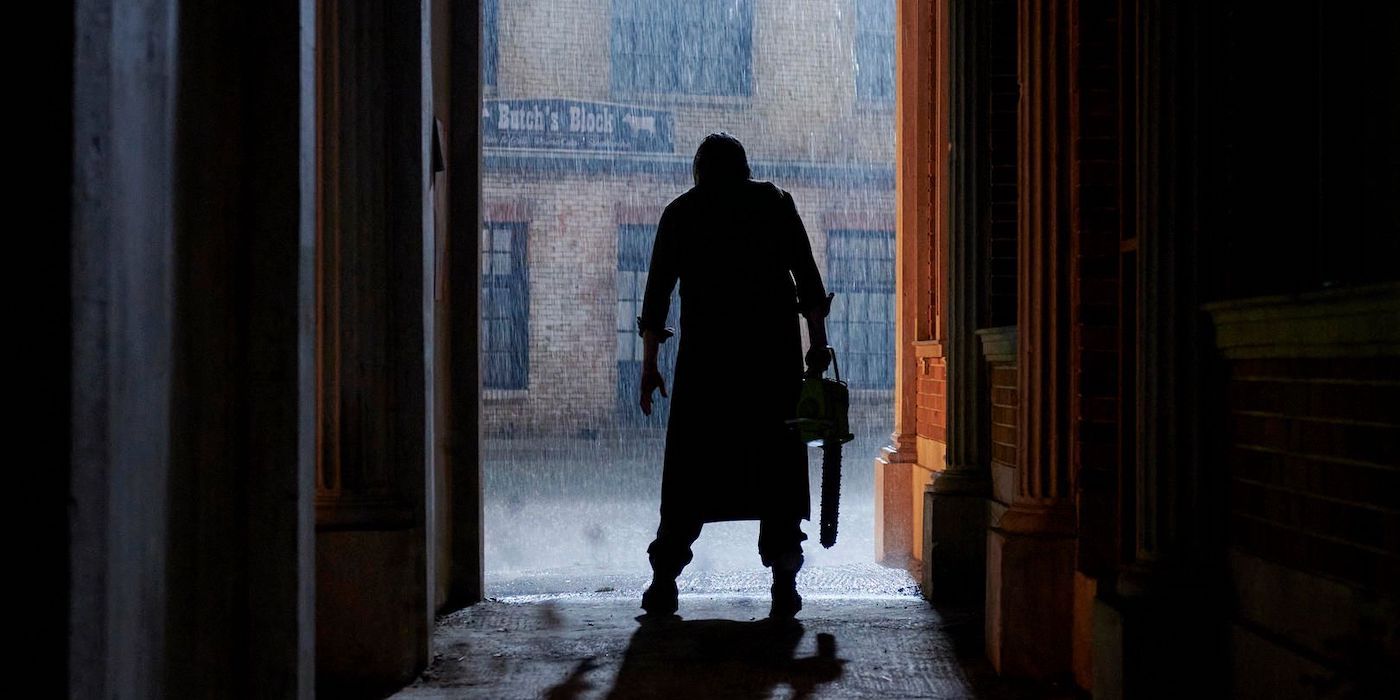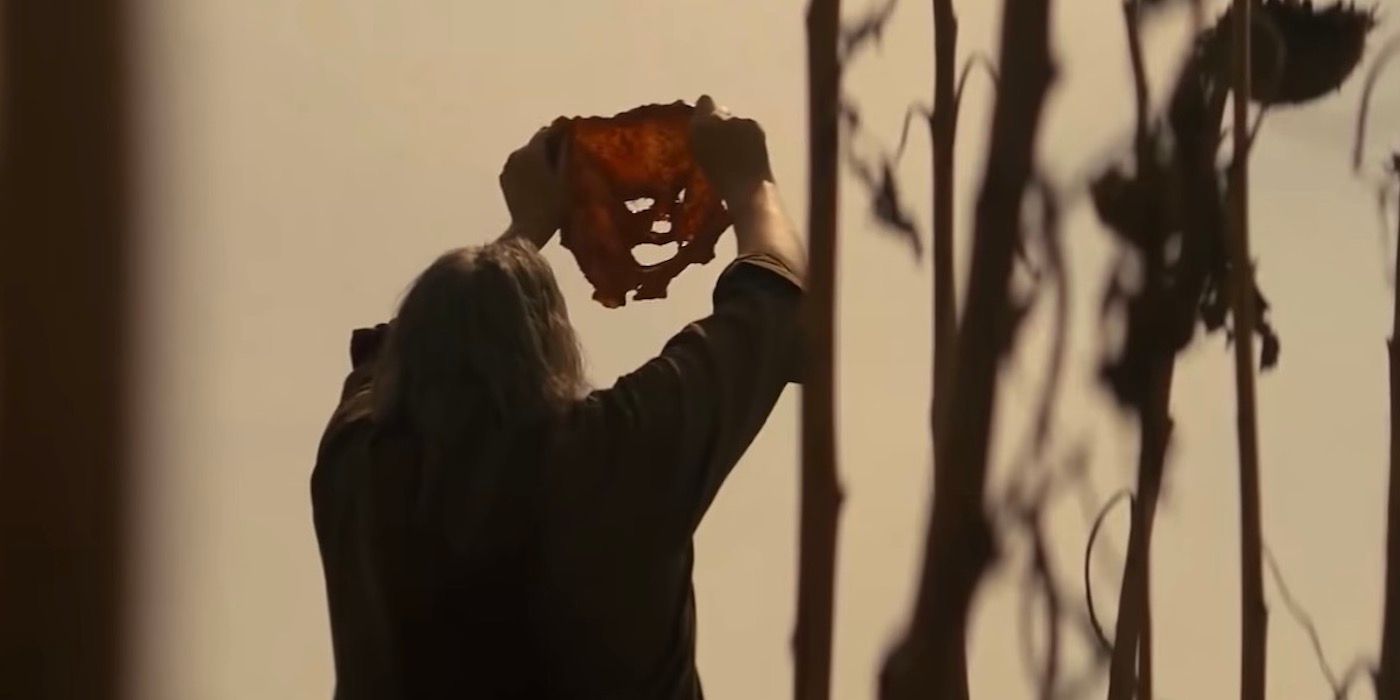Ever since the release of the 1974 horror classic The Texas Chain Saw Massacre, the franchise has struggled to recapture what made this film such a disturbing, horrific experience. The series has attempted the absurd (The Texas Chainsaw Massacre 2, Texas Chainsaw Massacre: The Next Generation), tried to directly recreate the terrors of the original (2003’s The Texas Chainsaw Massacre), and attempts to go back and explore the origins of the franchise’s killer, Leatherface (Texas Chainsaw 3D, Leatherface). The latest film in this series—another title simply taking the name Texas Chainsaw Massacre—attempts to do all three, and fails in every respect. The result might be the worst film in a franchise packed with terrible choices and awful installments.
In Texas Chainsaw Massacre, a group of idealistic entrepreneurs comes to Harlow, Texas, in the hopes of revitalizing the town’s old abandoned main street with the promise of brunch restaurants, art galleries, and comic book shops. The group arrives merely hours before their investors are arriving to find that this main street isn’t as empty as they thought, as an orphanage is still occupied by its owner Mrs. Mc (Alice Krige), who is taking care of the last "child" remaining, which just happens to be Leatherface (Mark Burnham). When a disagreement with Harlow’s new occupants leaves Mrs. Mc dead from a heart attack, Leatherface is free to roam the town once more, looking for revenge, and whoever else he can cut to pieces with his chainsaw.
Amongst all of this, Texas Chainsaw Massacre also attempts to take the 2018 Halloween approach to this story. The survivor of the original film, Sally Hardesty (now played by Olwen Fouére), has spent decades trying to find Leatherface, and now that he’s back, she’s on a mission to finally get the revenge that she’s been seeking. Texas Chainsaw Massacre does everything it can to make Sally their Laurie Strode, even dressing her in a similar outfit, and making her a hardened badass strengthened by her need for vengeance. But in actuality, Sally is used as little more than a deus ex machina for the story of these young entrepreneurs, and a reminder of how far this franchise has fallen since the original.
But the way Texas Chainsaw Massacre utilizes Sally is emblematic of how the film handles so many of its elements, as TCM throws so many half-assed and unconsidered ideas against the wall to see what sticks, none of which do. For example, it’s never quite clear what Texas Chainsaw Massacre is trying to say about gentrification, even though the entire premise of the film is centered around this. The people this group encounters are wary of these changes, and while it’s clear that director David Blue Garcia and writer Chris Thomas Devlin are making fun of influencers, it’s never explored if the film is for or against the change these four are offering to bring to this dusty, mostly deserted town.
Even stranger is how Texas Chainsaw Massacre seems to have a misplaced sympathy for the film’s antagonists. Mrs. Mc hangs a Confederate flag outside her orphanage, claiming that she “didn’t think about” what it means when the group of newcomers tries to take it down, despite her clear awareness that her choices could be painful for others. When she has a heart attack soon after this incident, it’s as if the film wants us to have compassion for her ignorance, After Mrs. Mc is dead, and Leatherface has sliced her face off to make his latest mask, we see him go back to her room, lovingly embracing her clothes, and even putting her makeup on her peeled-off face. Again, it’s like Texas Chainsaw Massacre is hoping that we’ll see that there is some humanity left in this person we’ve already seen stab a man with his own broken wrist bone.
But easily the most egregious of Texas Chainsaw Massacre’s odd choices comes in the form of Lila (Elsie Fisher), whose sister Melody (Sarah Yarkin) has bought this street in Harlow with her business partner, Dante (Jacob Latimore). Lila is the survivor of a high school shooting, and in case the film telling us that isn’t enough, we get an unnecessary flashback, complete with horrified screams and the image of Lila still alive amongst a bloody pool of her dead classmates. Lila is quiet and withdrawn from the rest of the group, still not only dealing with the trauma, but the question of why she survived while the rest of her friends are dead. But through the events of Texas Chainsaw Massacre, it’s almost as if the film is saying that in order for Lila to rise above her past trauma, she has to be proactive in another tragedy, complete with her having to take up a gun in an attempt to stop Leatherface. No one was expecting an actual substantive conversation about school violence in a Texas Chainsaw Massacre movie, yet the choice to even add this element to the narrative is confounding and misguided at best.
Yet another thing that the subsequent installments have forgotten is the slow-burn intensity of the original film. The 1974 original was surprisingly quiet, a terrifying film that relied more on truly unsettling moments that got under your skin instead of over-the-top gruesome violence. But over the years, Texas Chainsaw Massacre has had more in common with Halloween or Friday the 13th, introducing a new cast each time with the sole purpose of giving the film’s villain some victims to dismember. Once this latest Texas Chainsaw Massacre begins Leatherface’s murders, the film never slows down, finding blunt and brutal ways for Leatherface to kill. It’s not a question of whether Leatherface will murder our entire cast, it’s a question of how quick he’ll do it, and how disgustingly the act will be done. At one point, Leatherface even climbs aboard a party bus, which leads a group of influencers to get out their phones, comment on how fake Leatherface looks, and say that if he tries anything he’ll “be cancelled.” Naturally, Leatherface wipes out everyone, another example of how Texas Chainsaw Massacre no longer cares about the subtleties that made the original so compelling.
But in addition to the return of Sally, Texas Chainsaw Massacre wants the audience to remember where this series came from, with frequent callbacks to the original and an ending that directly references Sally’s own conclusion. Yet all these callbacks do is remind how awful this installment is in comparison, how what worked so beautifully in the first film has been a struggle to recreate since. 2003’s The Texas Chainsaw Massacre at least got somewhat close to hitting the tone of the original, but almost every other sequel has turned this into little more than a dull murder spree. This latest Texas Chainsaw Massacre makes matters even worse with its aimless themes and questionable concepts amongst the tedious kills. Maybe the influencers were right? Maybe it’s time for Leatherface to get cancelled.
Rating: F
Texas Chainsaw Massacre is available to stream on Netflix.



